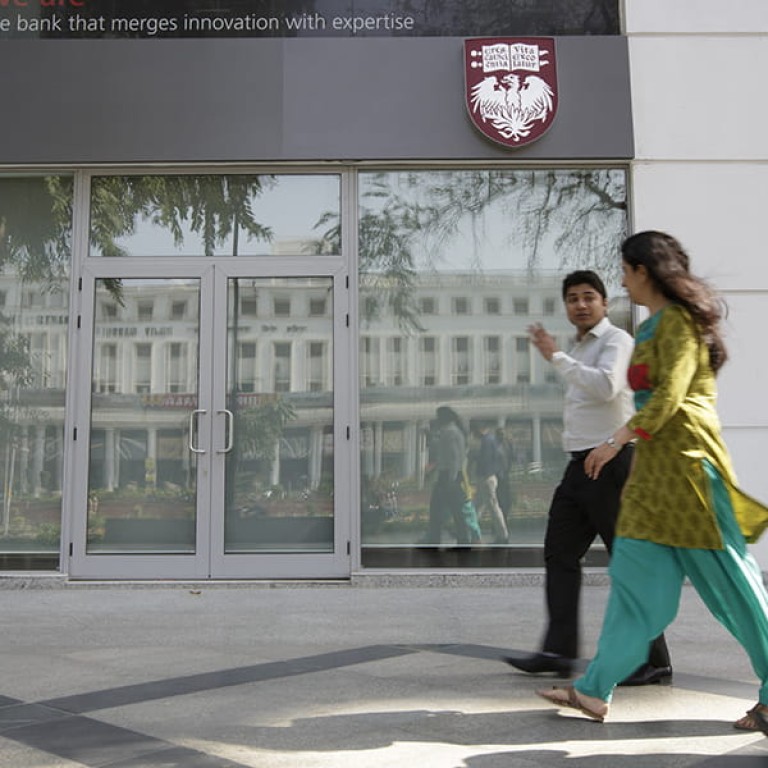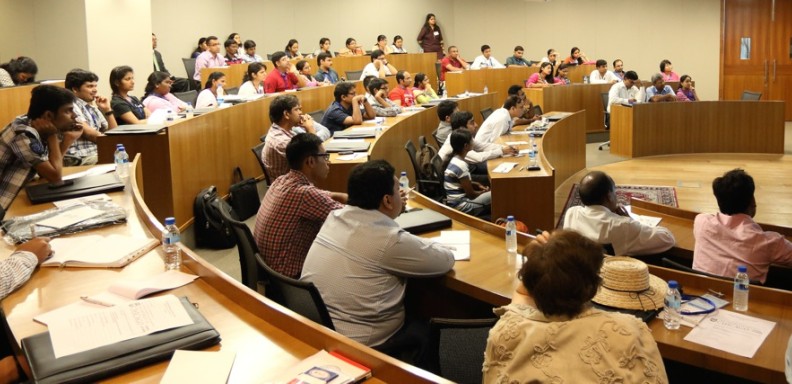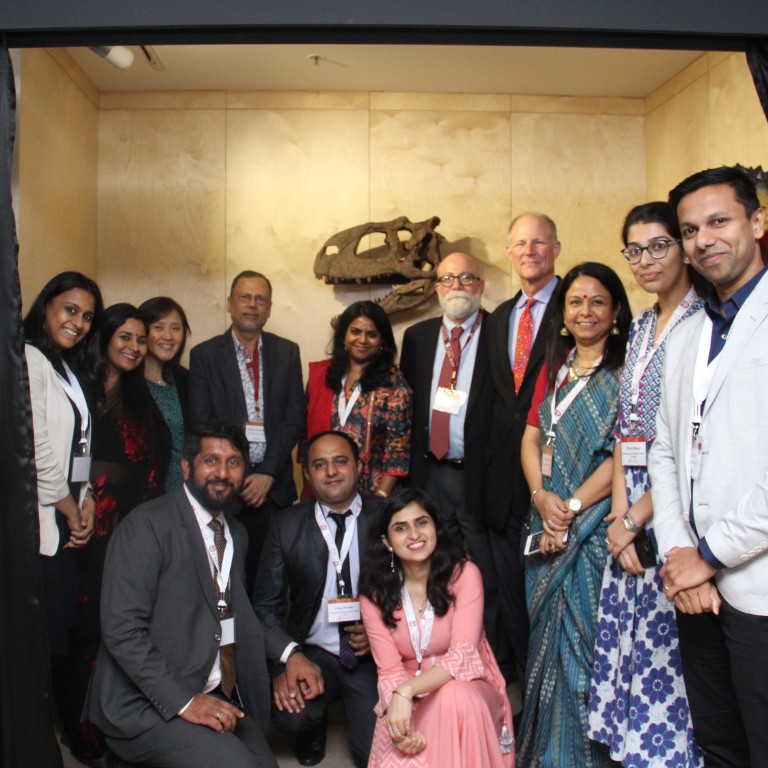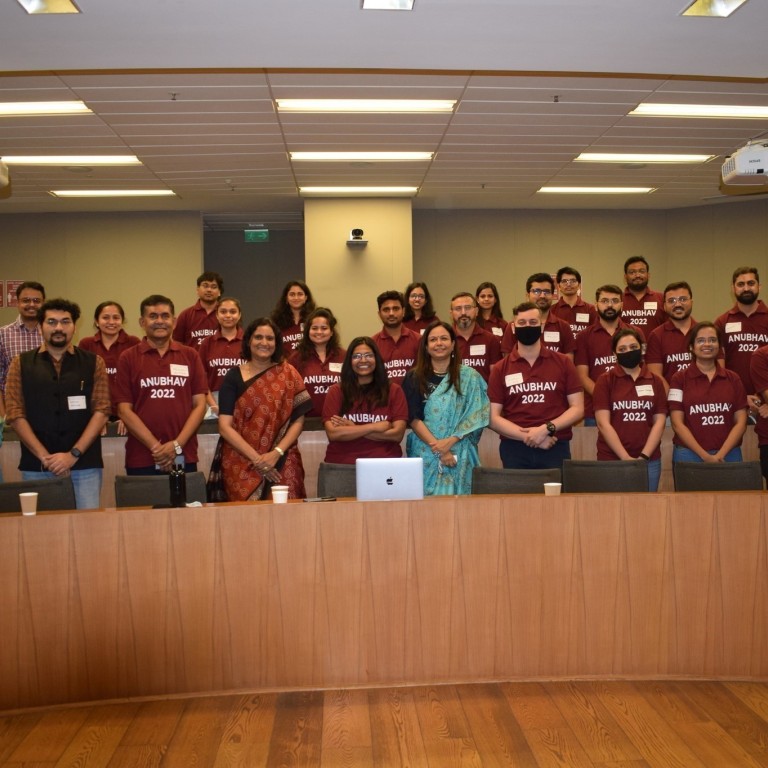For the past five years, Dipesh Chakrabarty, Lawrence A. Kimpton Distinguished Service Professor of History, South Asian Languages and Civilizations, and the College, has been Faculty Director of the UChicago Center in Delhi, which he also helped to found. Professor Chakrabarty is one of the most distinguished scholars of the humanities at the University and is enormously renowned in his home country of India.
As he hands over the reins to our next Faculty Director, Professor Supratik Guha, Professor Chakrabarty gave a wide-ranging interview in which he both looks back at his tenure and looks forward towards the future. In the interview, Professor Chakrabarty covers the Center’s history, its academic model and its disciplinary focus, and the experience of the pandemic. He also offers some advice to his successor and shares his thoughts on US-India relations, the nature of academic freedom in India, and his hope for ever-expanding collaboration between Western scholars and their Indian counterparts.
The interview was conducted by Wolf Hertzberg AB ‘23, Communications Intern at the Delhi Center.
This interview has been edited for length and clarity. The views expressed in this interview are those of Professor Chakrabarty and do not necessarily represent the views or opinions of the University of Chicago.
WOLF HERTZBERG: Can you summarize your involvement with the Delhi Center, from its inception, to its founding, through to your tenure as Faculty Director?
DIPESH CHAKRABARTY: I was involved earlier than its inception—it goes back to its conception. I chaired the committee that recommended setting up a center in Delhi. The Beijing Center had already been established, so there was a model. But don’t forget also the differences between India and China: for instance, India is a place where English is spoken and is the language of academic communication. But the Center in China still was a model.
We [the committee] were involved for quite a few years, because even after we put in our report, we were involved in the actual building of the Center—for instance, choosing the architects. We chose a team of architects who had had some involvement in building the Beijing Center, but we also got an Indian architect who could imagine a Center that would benefit in its physical planning from the experience of the Beijing Center, but also have some Indian aspects to it.
So I was involved right up to the beginning of the Center. That took up a number of years. Then Gary Tubb became the first Faculty Director, partly because I wanted some time off to do my own research. I was the second Faculty Director, and in between Mark Hansen was an interim director for about six months.
Why did you choose Delhi as the site?
The other places in contention were Pune, where we have a South Asian CIV-abroad program, and then places like Bangalore and Hyderabad, which are upcoming, important metropolitan regions in India with good institutional density and communications networks. But Bangalore was suffering from a huge traffic problem—the city had built so much and the infrastructure hadn’t kept pace with it. The intense nature of Bangalore stopped people from moving between different parts of the city, and we thought if we had a Center there, one problem we might have would be actually just attending events there. Hyderabad was another interesting city, but in the end they both lost out to the fact that Delhi has the biggest institutional density of all Indian cities. And also that the center—not our Center, but the center of the city, Connaught Place, where the Center is—is very well connected through the Metro network.
Another interesting question we debated in the process of imagining what Chicago could do in terms of engaging India, and what the Center would really be for, is that we basically rejected two models of making higher education global. One was setting up an overseas campus, which other institutions do; the other was to go in for the granting of joint degrees. And we decided that we didn’t want to set up an overseas campus and that we weren’t ready to do joint degrees (though some thoughts may be changing on that score now, ten years later). So we eventually pitched the center as a place that would facilitate research collaboration between scholars based at the University of Chicago and scholars based in South Asia. Chicago was known as a university of grand ideas, or that produced new ideas, so we thought that our identity, initially, should be that of a university that valued research.
But of course, being there meant that we got better known. Middle class Indians were not as aware and still aren’t as aware of the University of Chicago as they are of the Ivy Leagues—maybe Harvard, Princeton, Stanford would be the three names everyone knows of. But by being there physically—and we still have the best facilities of any American, or probably any overseas university in India—we were getting known. And that eventually began to have an effect on our undergraduate and graduate recruitment. So I think the center is now more involved in the life of the college than it initially was.
You do sometimes hear or read criticism of some of those models you rejected, the degree-granting or satellite campus model—that the academic standards are lower, that they’re just money-grabbing institutions…
There is that—we did not think that the Universities that were in business of starting overseas campuses were in the same league as our own. Though Yale-NUS worked very well for a while, but, as you may know, it’s now being folded back into the NUS entity. There’s also the example of NYU Abu Dhabi, but they had a special endowment just for that campus alone, so that was a different story. I think we’ve been on the whole happy with what we’ve done. The results have been good.
In the past, you’ve spoken of collaboration with Indian higher education as a personal highlight of your tenure. Are there particular differences in the models that stand out? What are the challenges and the opportunities of collaborating with Indian institutions?
The main challenge has been to get enough collaboration off the ground between our colleagues in the natural sciences. Partly because they need big amounts of money for what they’re doing. And the grants that [the University] gives [to support collaboration in India], which are wonderful for projects in the humanities or social sciences…we haven’t succeeded in involving our science colleagues that much. And I’m hoping that with Professor Guha’s appointment as the faculty director—and he comes with an engineering science background—that that will improve.
Right. You’re an interdisciplinary humanities scholar; he [Supratik Guha] is a materials scientist.
It was easier for me to push collaboration on academic areas I’m familiar with. And I’m also known in India, through colleagues. I’m hoping that Supratik’s profile is different. He’s an energetic person, and he loves India and South Asia. I’m also hoping that he will continue to build on what we’ve already built and add this other dimension to the Center’s life.
Apart from that, are there any recommendations you have for your successor? Any particular areas the Center should focus on?
It’s always good to work closely with the Executive Director, currently Leni Chaudhuri. And I’ve worked both with Leni and Aditi Mody before her, with tremendous benefit. They’re on the ground. They’re constantly being approached by Indian scholars and academics and institutions. They really have a much better institutional map of what happens and where and who might be interested [in our work]. What’s critical is this constant interaction and consultation between the Faculty Director and the Executive Director clearing the path for new collaborations and getting to know the Indian scene better. I did a lot of that with Aditi. I couldn’t do as much of that with Leni because we were hit by the pandemic. But when the pandemic lifted, or at least receded a bit, I did go to some places with Leni, including a very productive trip to Bangladesh from which I’m expecting good results.
That’s another obvious question—the pandemic hit right in the middle of your tenure.
I had to think hard about what to do during the pandemic, and how to keep up the sense of involvement and participation on the part of the Center’s staff. And eventually, one of the things we did was a series of online conversations between my colleagues in Chicago and colleagues in India. The series was called the Chicago Dialogues. I recruited a friend of mine in India, Avik Chanda—who very sadly died a few weeks ago, very shockingly—he became the anchor for these dialogues. And we teamed up with an Indian company in Kolkata I’d got to know through Avik, who provided us with a digital platform. These dialogues are very successful and they really were vibrant conversations. And some of them have now been published. In fact, the conversation that Wendy Doniger [of the Committee on Social Thought and the Department of South Asian Languages and Civilizations] had with Gary Tubb from the South Asian Studies Department and me has now been translated into Bengali and has come out as a book. I wrote a forward for it, because it’s my mother tongue. So we produced some good things—the Chicago Dialogues was a great thing to do while the pandemic was happening.
From an American point of view, we’re hearing an awful lot about India lately. Modi recently made a state visit, to enormous fanfare. There’s generally talk of more India-US cooperation, basically for realist reasons of anti-China balancing. There’s talk of more collaboration specifically in education, technology, and so on. Would you say we’re entering a new era of US-India cooperation?
No question. The reasons may be hard realist reasons, but whatever the reasons, we will stand to benefit from the situation. There will be a lot of academic collaboration between India and the US in the coming years. And we’re already seeing some of the benefits. We have this visiting Professorship, named after this 19th Century Indian religious personality, Swami Vivekananda, which is actually endowed by the government of India. And through the Pandemic and for various other reasons, this money was not being used. But the Indian side was galvanized into action because of Prime Minister Modi’s visit. And one result of it was that the very dynamic Consul-General we have in Chicago now, Mr. Somnath Ghosh took an interest in this Professorship that had gotten stalled for a while, and he rescued it from its having been stuck in some institutional process and revived it. Thanks to Prime Minister Modi’s visit and the Consul-General’s dynamism, we’re finally getting Professor Francesca Orsini, from England, to be with us for two years in a row, for a quarter each time, as the Vivekananda Professor. So that was already a sign that his visit produced change in the situation.
The Center was founded in the Spring of 2014, so its lifespan coincides exactly with the “Saffron Wave” in Indian politics, the rise to prominence of political Hindutva, etc. Many Western scholars, especially of a liberal persuasion, are very critical of the Modi Government. The Delhi Center necessarily works quite a lot with Indian governments both state and federal, through the EPIC program and in other ways. And we’ve seen with our other global centers in Beijing and Hong Kong that the relationship with the host government can be a liability, but it's also a necessity…any thoughts on that?
I think we need to be sensitive to the realities of the situation. Wherever you are, whether in China or India—the situations are different, but there are political sensitivities in either place. And you need to be aware of them, and you need to negotiate them and work around them. What you can’t afford to do, I guess, is to get into an unproductive jam where you just can’t work. And that’s something we try to avoid. So it’s a delicate game where you try to retain the academic values of the university, and you try to defend them, and you try to promote them, all while being sensitive to the reality around them.
Earlier this year, Professor Pratap Bhanu Mehta, formerly of Ashoka University, gave the annual Zell Lecture at the Law School on academic freedom in Indian higher education. There are some concerns about academic freedom in India—
—There are.
There also may just be legitimate different ideas about academic freedom compared to in the West.
Something you realize, and Pratap may have touched on this, is that the American idea of free speech and Indian ideas of free speech are not exactly the same. There are many things that you can say in American in the name of free speech, things for which you might be hauled to the court for in India. Hate speech, for instance, is something that is more allowed in the US under the constitution, whereas the freedom of speech you enjoy in India is not as untrammeled. That said, Pratap of course has been vocal in India on questions of academic freedom, and he has also sometimes personally paid for his being so vocal. So it is a concern, and people articulate it—people within India articulate it, people outside India articulate it.
But when you are actually the academic director or Executive Director of a Center, what you want is for the center to have a thriving intellectual life. That’s your goal. And it might be that the reality outside sometimes places constraints on the functioning. Sometimes you can negotiate the constraints and sometimes the constraints seem huge. And you just have to be creative about it, you have to be practical about it, and do what can be done. Because your ultimate goal in having the Center is to promote, defend, and further academic conversations. We’re not there to take part in Indian political life—that’s not our role. But Indian political life is the sea in which you're swimming. And the currents change from time to time.
Yes they do. There’s been one particularly strong current in one direction the whole time the Center’s been there—
—right—
—but that probably disguises the eddies beneath!
Ha! As I said, the currents change. And sometimes the currents are much stronger in one direction than another.
When we were discussing the decision of where to put the Center and what model to adopt, it does seem to me that one result of those choices is that there are comparatively few opportunities for undergraduates.
That is true. But see, before the pandemic we were actually beginning to expand it. For instance, in my time I was able to create, through the office of John Boyer, two Metcalf fellowships that that college has for placing students overseas. We made a decision for a visit by two undergraduate students in the sciences to intern in our leading biogenetic institutes here in India, and to be part of their lab work. And it worked for two years before the pandemic started. But I’m hoping that those things will expand. The College is expanding, the College is becoming more important in our lives. And I’m sure the Center will have to reflect that.
There’s no plan to move any kind of study abroad there?
From Pune to Delhi, you mean?
Yes.
Not really—well, students from Pune go to the Center for a week. But one reason is that Delhi is more expensive, and Delhi’s less safe—that is the perception, at least, particularly for young people and particularly for young women. And Pune seemed to be safer and also more economical.
OK. Finally, on a personal note: you have an upcoming research project in India, sponsored by the Center, on the conch. Would you like to say something about that?
Yes! It’s quite fascinating. I’m working with a young anthropologist in Kolkata, a woman whom I’ve known for a while—Dr. Sukanya Sarbadhikary. And she was interested in the rituals of domesticity and pursuing particularly the idea of auspiciousness in those rituals. And the conch, it’s a mollusk, but it’s a very important object in [those rituals]. And she discovered that the warming of the oceans was affecting the availability of the conches, and the source of conches had shifted from the Bengal coast to Tamil Nadu coast—where, actually, the conches are collected by Muslim divers, who now produce this object that becomes a symbol of auspiciousness in Hindu domestic rituals! So we thought it would be interesting to combine the natural history of the oceans and what their warming is doing to different forms of life, including this particular kind of mollusks, and the way in which then they’re affecting the motions of domesticity—the market for conch shells, their price, as well as their availability.
In some ways, while Dr. Sarbadhikary was working on this before, she took the supply of conches for granted. I’d been working on climate change, and she was interested in what I was doing. And she realized that global warming means that you can’t take the supply of these things for granted—because it’s actually a form of life, and it's being affected by the warming. We try to combine these two aspects together in this project. I’m quite excited, because I want to learn from her but I hope she will learn something by working together on the history of the seas. It’s trying to bring natural history and cultural history together.



